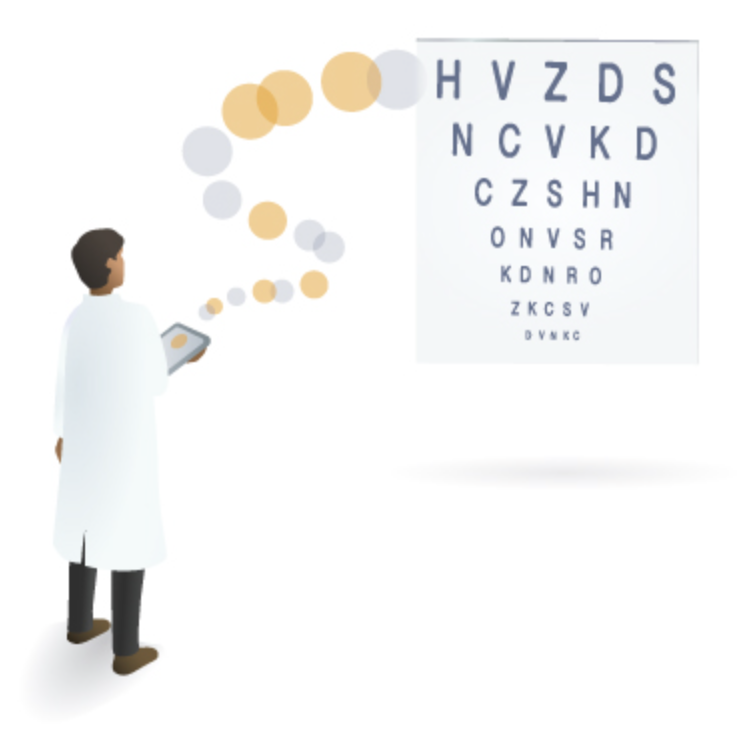The Future of Clinical Development: Verana Health Presents Groundbreaking Research Demonstrating the Use of Real-world Data to Replicate Primary Outcomes Measures
Author:
Theodore Leng, MD, MS, Verana Health

At the 2021 Association for Research in Vision and Ophthalmology (ARVO) Annual Meeting, my colleagues and I showcased a first-of-its-kind comparison of phase 3 clinical trial results and real-world data (RWD) housed in the American Academy of Ophthalmology (Academy) IRIS® (Intelligent Research in Sight) Registry. As the world’s largest single-specialty clinical database, the IRIS Registry contains over 367 million patient encounters from more than 65 million unique patients. The Academy—along with Verana Health—oversees the IRIS Registry, and coordinated with our team of researchers to explore whether real-world outcomes could be replicated in a retrospective simulation of the VIEW 1 and VIEW 2 (VIEW 1/2) studies.
Overview of “AAO IRIS Registry data replicates VIEW 1 and VIEW 2 clinical trial outcome data” presented at ARVO 2021.
Study Design and Results
VIEW 1/2, a foundational pair of studies in ophthalmology, assessed whether patients with neovascular age-related macular degeneration (wet AMD) could undergo treatment with a new therapy that was administered less frequently than the standard of care. Nearly 1 million patients in the United States have wet AMD, which can lead to blindness or severely diminished vision if left untreated.
Ocular injections with anti–vascular endothelial growth factor (anti-VEGF) agents have been shown to slow disease progression and restore vision loss in patients with wet AMD. In the VIEW 1/2 pivotal trials, researchers compared two anti-VEGF agents—aflibercept (Regeneron) and ranibizumab (Genentech)—to see if aflibercept dosed as frequently or less frequently than ranibizumab was a noninferior therapy.
We had two goals in our research:
- To determine if we could replicate the VIEW 1/2 trials—including enrollment criteria, dosing regimens, and primary study endpoints—using retrospective real-world data
- To assess whether real-world patients responded in a similar manner to clinical trial patients if they followed the same protocols
Our study group reviewed IRIS Registry data to identify real-world patients whose baseline characteristics (ie, patients older than 50 with treatment-naïve wet AMD and no previous diagnosis of specific retinal diseases) matched those of patients enrolled in VIEW 1/2. Among these patients who fit the enrollment criteria, our team identified patients whose treatment (ie, drug selection and dosing regimen) aligned with the three arms of the phase 3 trials. Finally, we tracked patient outcomes at timepoints that aligned with the clinical trial endpoints.
We found that the outcomes of patients in our retrospective replication study were similar to the results in VIEW 1/2 studies. This demonstrated proof-of-concept and showed the value of having a robust, well-curated clinical database such as the IRIS Registry.
Implications for Medicine at Large
Learning that results were similar among these patient sets may put clinicians at ease. Clinicians in any specialty may have doubts that phase 3 study outcomes are reproducible in the real-world. However, in our study, data show that the outcomes for patients who followed clinical trial protocols were similar to those of patients in tightly controlled settings.
Our research findings have implications beyond eye care. If future retrospective replications of pivotal trials show that real-world results are comparable to clinical trial outcomes, it could potentially affect the way that clinical trials are designed. Consider the example of control arms. Today, researchers in studies with control arms are required to enroll patients based on strict criteria and treat them according to a particular protocol.
If researchers are permitted to use real-world database information to replicate a control arm, then resources in that clinical trial could be focused toward only treating patients enrolled in investigational arms, thus reducing monetary costs and the time it takes to conduct the trial.
At ARVO 2021, my colleagues and I shared two other studies that articulate a future for big data in medicine. The goals of these initiatives are to improve the depth and interoperability of the IRIS Registry. In one study, Mbagwu et al demonstrated methods by which data from imaging reports could be linked to patient records in the IRIS Registry. In another study, Kras et al developed a means by which patient data that are siloed in various platforms could become more interoperable after standardization.
As the IRIS Registry grows in scope, it remains important that its data are coherently curated and organized so that researchers can access them efficiently and effectively. Further, a well-constructed IRIS Registry serves as a blueprint for other specialty-specific databases, providing a roadmap for the future of medicine.
The downstream effects of a replication trial like the one shared by my colleagues and me at ARVO are unknown. At the very least, they reassure clinicians that the data of which they administer therapy may not apply only to strictly controlled settings.
About the Author
Theodore Leng, MD, MS, is Medical Advisor to Verana Health and Director of Clinical and Translational Research at the Byers Eye Institute at Stanford, Stanford University Medical School.


Let's Accelerate Research Together
To learn more about Verana Health, please fill out the information below and our team will follow up with you as soon as possible.

